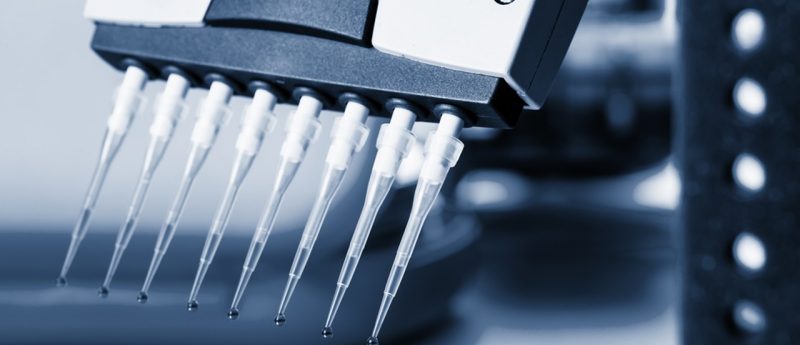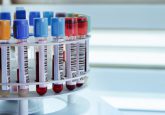Interview with Stuart Kushon (Phenomenex) on the Mitra Microsampler


Dr Stuart Kushon currently holds the position of Senior Scientist, and leads efforts to develop sample preparation products at Phenomenex. Stuart attended the University of Pittsburgh and received his PhD at Carnegie Mellon University studying the thermodynamics and kinetics of non-covalent interactions of small molecules, oligonucleotides and oligonucleotides analogues. Stuart is a physical organic chemist with over 10 years of experience developing products for the direct detection and analysis of targets including: viral, bacterial, and protein pathogens as well as small molecules that serve as diagnostic markers for disease states. Since joining Phenomenex his efforts have resulted in novel sorbents for chromatography, microsampling devices, and a line of phospholipid removal and protein precipitation products.
What was your main motivation/drive for developing a dried matrix microsampling technology?
Dried blood spotting (DBS) cards had the potential of delivering improved human/animal welfare, significant cost-savings, and a streamlined workflow in clinical trials and pharmaceutical research settings. But, to a large extent, that potential was not fully realized due to its fundamental limitations as a true microsampling technology: the volumetric hematocrit bias, spot homogeneity issues/user friendliness, and inability to automate using common instruments. Our motivation in developing Mitra was to fulfill the original value drivers of DBS, without those critical performance shortcomings.
In creating your design goals for the Mitra™ (RUO) Microsampling Device, what were the top three customer needs you were trying to meet?
The top three customer needs that we were trying to meet with the initial Mitra design were to 1: have a research use only (RUO) microsampling device that delivered reliable quantitative data from a small volume animal/human blood collection (<20 µl) free from hematocrit bias issues, that 2: required minimal training and no specialized lab equipment to collect and extract samples, and 3: eliminated the need for freezing samples, laborious sample processing, and courier-based transport.
In one sentence, how would you describe the Mitra Microsampling Device?
The patent pending Mitra (RUO) Microsampling Device is a revolutionary, yet absurdly simple dried matrix microsampling device, based on volumetric absorptive microsampling (VAMS™) technology, that collects a fixed volume of blood and other biological fluids in seconds in a streamlined and cost-effective process for drug development and other research activities.
As part of your product development plan, you formed a pilot group. What was the purpose of that?
Mitra is a disruptive technology and it would be naive to think that we could foresee all of the technology and design considerations, nor could the technology’s performance really be ‘validated’ without the true voice of eventual customers. We partnered with scientists at leading pharmaceutical companies throughout the USA and Europe in order to get direct feedback from some of the leading minds in microsampling and dried matrix sampling. The members of the pilot program were essentially co-developers that provided input on the final product performance requirements, human factors design and characteristics, as well as tested the Mitra microsampler in their labs to ensure that it met assay bias, ease of use, and collection/drying/transport/extraction needs.
How did you see the Mitra Microsampler prototypes evolve based on feedback and input from the pilot group?
There are too many examples to provide here, but one major evolution included the engineering of a simple, cost-effective 4-pack clamshell format design (versus a cartridge-based system) that is suitable for direct sampling from participants involved in clinical trials, possibly even in an at-home or remote environment with minimal/no training. The 4-pack is the result of feedback from clinical trial unit nurses and scientists, and effectively allows direct, replicate sampling without the need to manipulate or even touch the individual sampling device. It’s a great example of human factors engineering and the true voice of the customer driving design.
What are the specific advantages of dried blood microsampling and how does Mitra support those?
Well, the advantages of microsampling in general are the reduction in blood volumes required allowing the use of minimally invasive techniques (e.g., finger/tail stick), but also include the advantages of dried microsampling, which are a simplified overall workflow compared to traditional wet blood/plasma sampling resulting in increased productivity, the elimination of a biohazard concern once sample is dry that removes the need for freezing/thawing samples and costly transportation by courier, and the ability to use common solvents and extraction protocols to prepare the sample for analysis. Mitra delivers on all of these advantages.
What are the limitations of dried blood microsampling?
DBS has been a primary format for evaluation of dried matrix microsampling and has some major limitations, such as the volumetric hematocrit bias caused by the need to take sub-punches from a DBS card with variable spot sizes and the lack of amenability to current liquid handlers to automate sample processing and extraction.
How does the Mitra Microsampling Device help to overcome some of these limitations?
The Mitra microsampler consistently collects a fixed volume of blood regardless of blood hematocrit level by means of absorbing blood via capillary action into the carefully controlled porous structure of the Mitra microsampler. The entire sample collected is extracted and analyzed resulting in dependable quantitative data. Also, Mitra is available in a 96-well plate format that fits standard SLAS guidelines, making it amenable to existing liquid handling robots in the lab.
What challenges do you see remaining for the Mitra Microsampling Device and for dried blood sampling in general?
The most obvious is the fact that plasma has been the gold standard for bioanalytical measurements in drug development and the potential differences of transitioning to whole blood must be well understood. We are working with several customers to do side-by-side studies of the Mitra microsampler versus traditional blood/plasma sample collection to understand the correlation between the two. Ultimately, the regulators of the drug development process will need to consider whether the potential differences in quantitative bioanalytical data are truly meaningful and present any legitimate risk to the drug development process and drug safety. The benefits are numerous and significant – reduction of animals required for research, less invasive blood collection processes (particularly for children and the elderly), reduced risk to both patient and clinicians (exposure) working with larger blood volumes, reduction in compromised chain of custody due to dramatically simplified workflows, reduced sample transportation costs with the elimination of dry ice and couriers, and the ability to collect blood samples for clinical trials where no practical method currently exists. We believe that, in time, the data generated by scientists will support dried matrix microsampling as a viable sample collection device that delivers dependable quantitative data, and does not compromise the drug development process or patient safety. We are confident that Mitra will lead the way in positive improvements to the paradigms of quantitative bioanalysis for drug development, as well as eventually improved patient comfort and convenience in general for clinical sample collection with future versions of Mitra products.
What is the best way for those interested in the Mitra Microsampler to get more information?
For those who prefer to talk to someone in-person, please call any local Phenomenex office (phone numbers are available at http://www.phenomenex.com/Home/ContactUs) and ask to speak to a Mitra specialist. If you prefer to communicate via email, send inquiries to [email protected]. There is also much information and a chance to request a sample at www.neoteryx.com or www.phenomenex.com/mitra.



